Rochester Optical Co., Rochester, NY
American Challenge View Camera
(Wooden Bed)
The "Challange" 5x8 Stereoscopic Camera
Gent's
Magazine, October 1883
An Illustrated Cataloge of Cameras, Lenses and Other Apparatus
and Materials for Photography, Dated April 1, 1884, W.H.Walmsey
(Philadelphia, PA), p.12 5 x 8 Left side and rear of camera. The four
nickel-plated tabs on the left side are utilized when the camera is set
up for vertical format phiotographs. Bottom of camera. Note: Metal label
on front face Stamp on
wooden case Stamp on
plate holder
A
second example - 5 x 8" Bottom of
camera, showing the hook that keeps the bed rigid, hooking onto the rim
of the built-in tripod top, the skeletal metal rear undercarriage, The rear
undercarriage from the back, showing the focus clamp (lever) and the
thumbscrew that allows a limited left-right swing.
Manufacturer's stamp at the rear of the base. An early,
oblong-type, top clasp instead of the usual round type. Date Introduced: - ; Years Manufactured:
c. 1883 This model features an incredibly cumbersome
method of reversing the format (e.g., from
horizontal to vertical) involves un-screwing 4 thumbscrews on the
bottom (two on the front standard and two on the rear standard).
The rear screws must not be unscrewed too far, lest the swing mechanism
(consisting of matching arc-shaped metal pieces) fall off
and the screws lost. It resembles the
American
Challenge Swivel Base Camera in that it has a built-in cast iron
tripod base that swivels in a large ball and socket. The first example above has a
metal Rochester Optical Co. label on the front, while the 2nd example
identifies the manufacturer via merely a stamp in its bed. A third
example is known, but only from its bellows and standards, as, at one
time, as might be predicted with cameras that come apart, it was unscrewed from its base and the base was lost. This camera would appear to be contain the system of
changing from vertical to horizontal format described in a patent,
shown below, by Erasmus B. Barker, and assigned to E. & H.T. Anthony &
Co. None of the examples of the Rochester Optical cameras are
stamped with said patent, which probably means they did not have a deal
with Anthony to use it. Which begs the question, why were they not
sued by Anthony for patent infringement. Perhaps they merely
agreed to stop manufacturing it, which would account for the it only
being advertised in 1883 and only in their 1883 catalog. In
addition, by 1884, both Rochester Optical and Anthony had a better ways
to change format. Barker's Mar. 28, 1882 patent.
Note the holes for thumbscrews, L and L' on the rear standard and J and
J' on the front standard, which allow the box to be turned relative to
the platform. References:
Back to Rochester Optical Group of Manufacturers
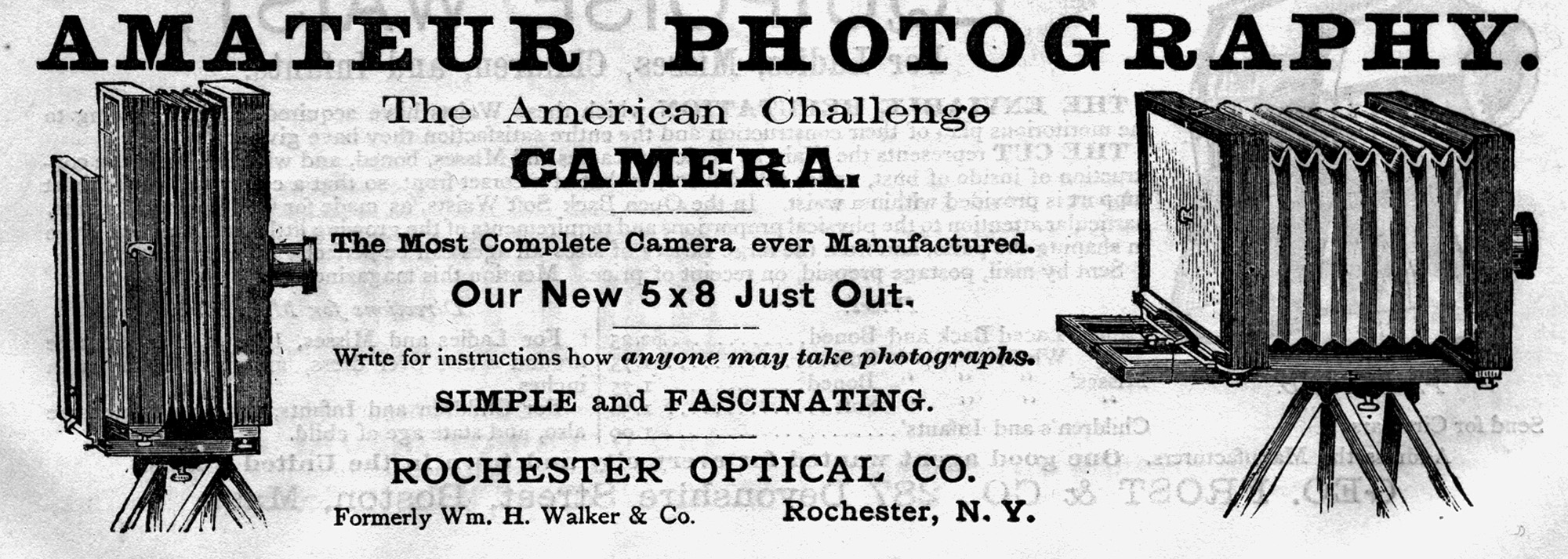

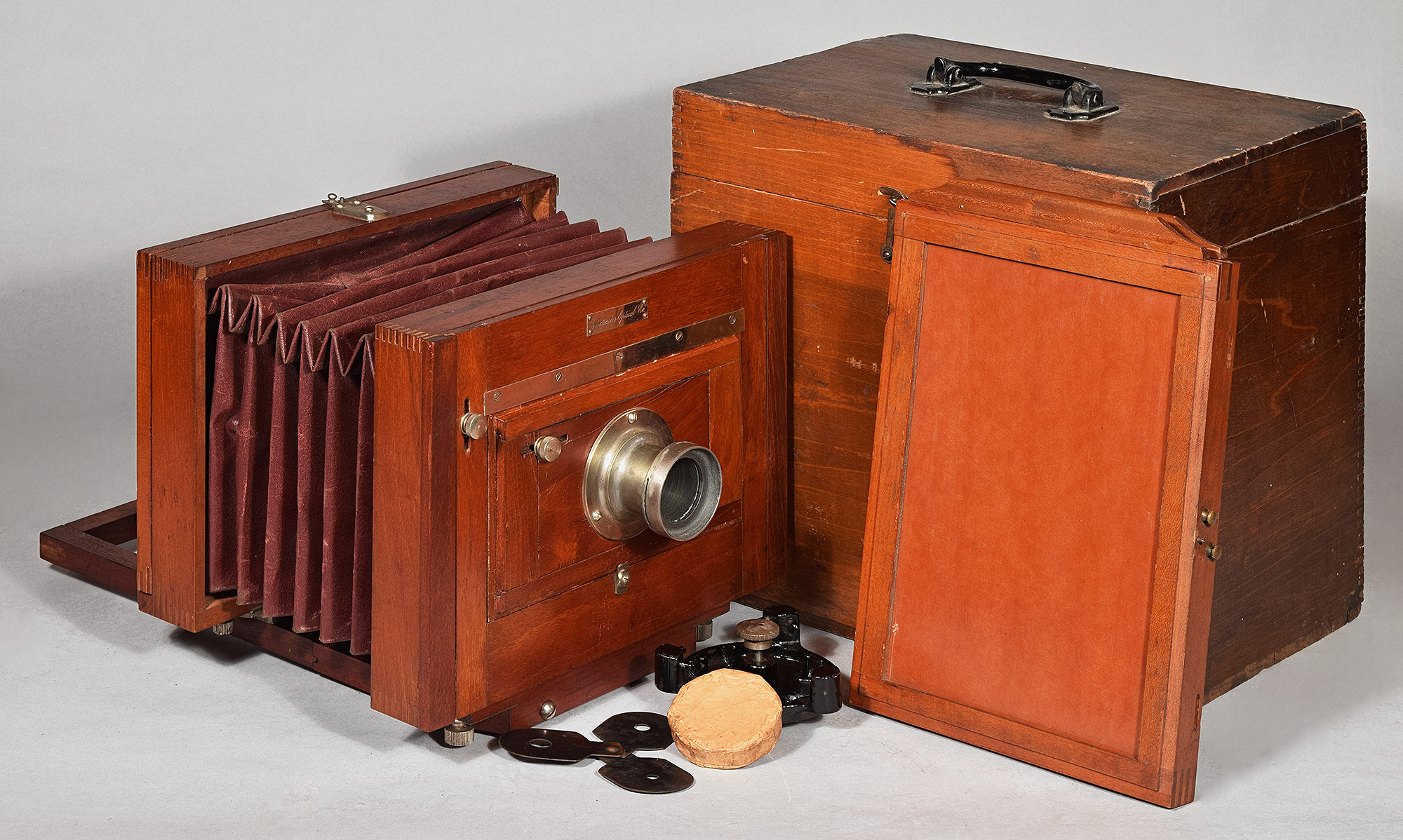
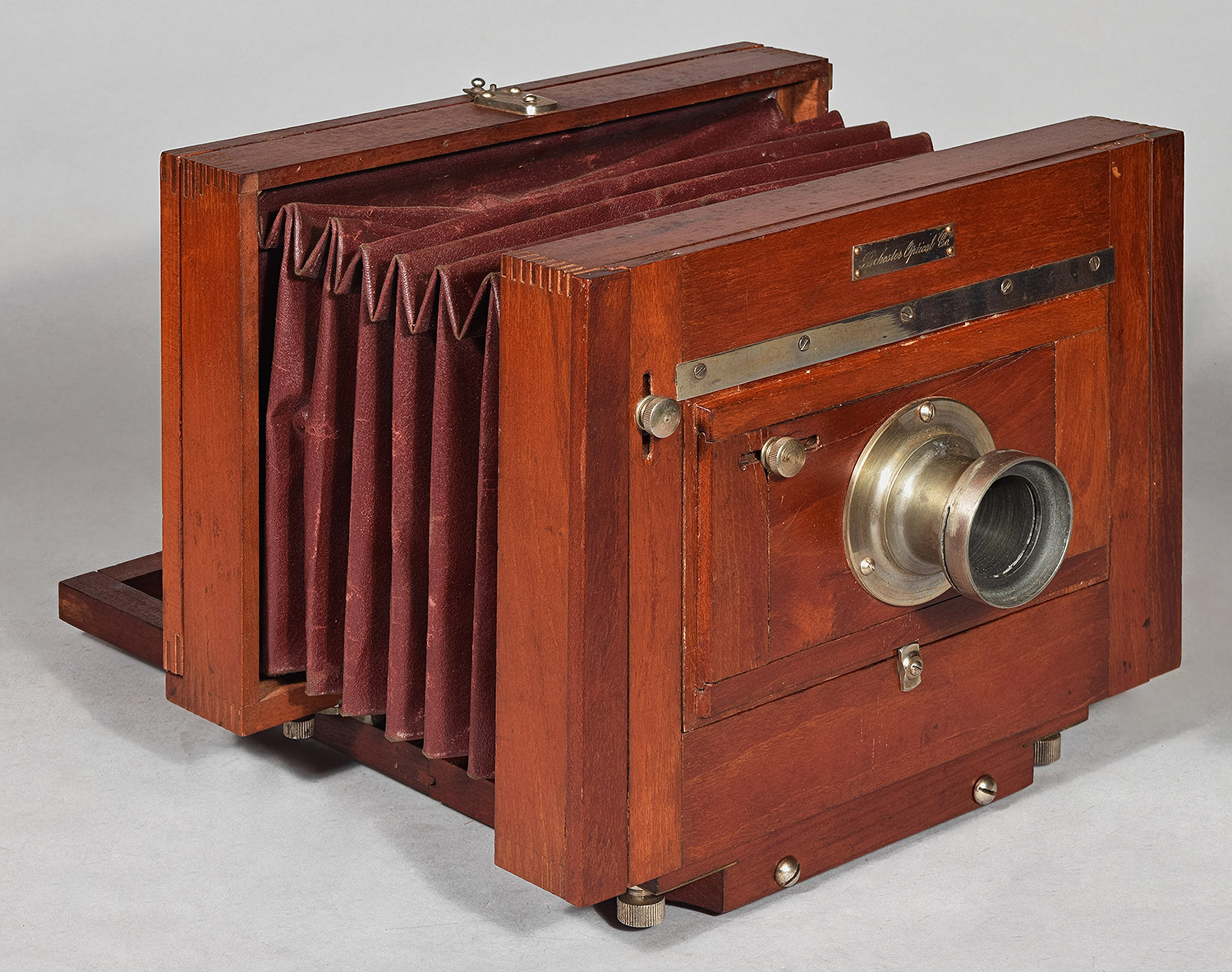

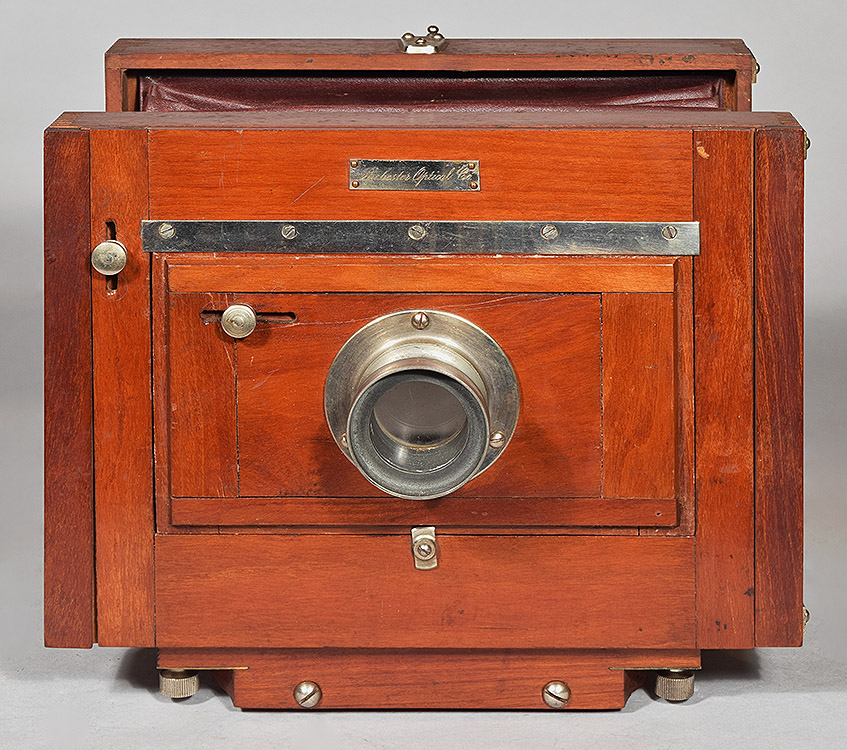
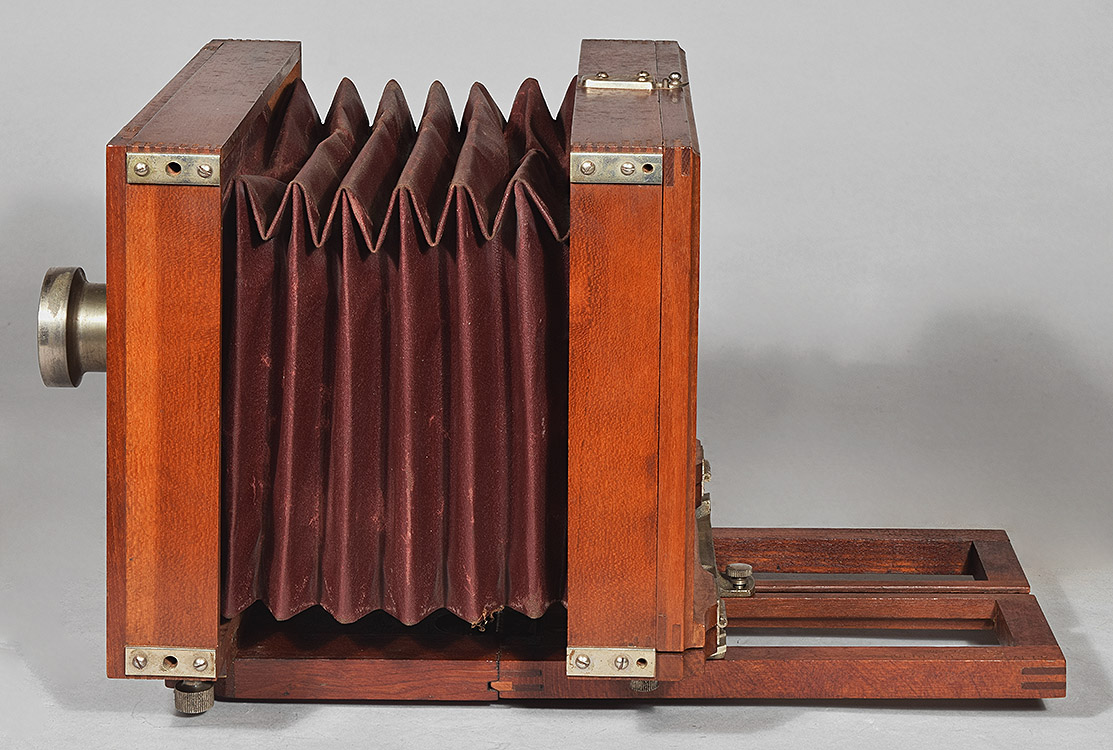
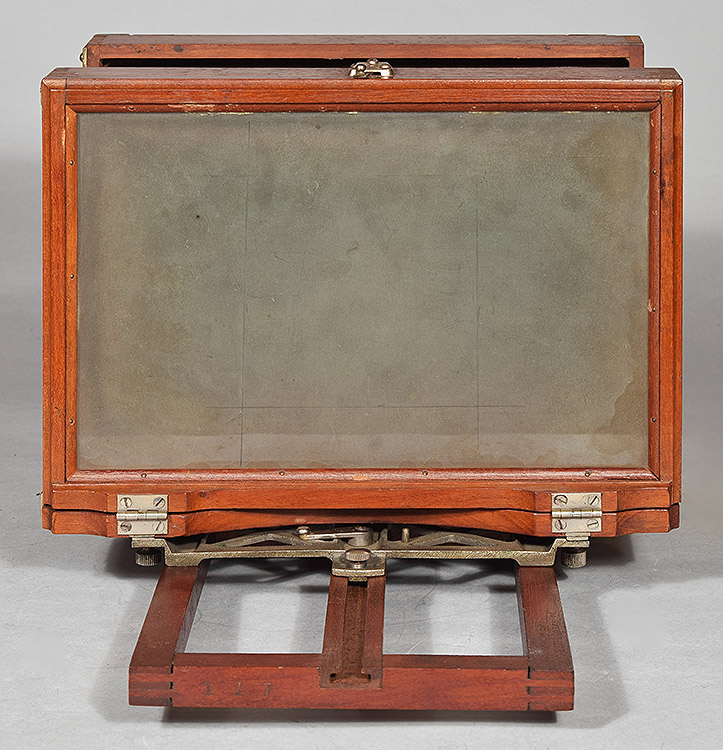
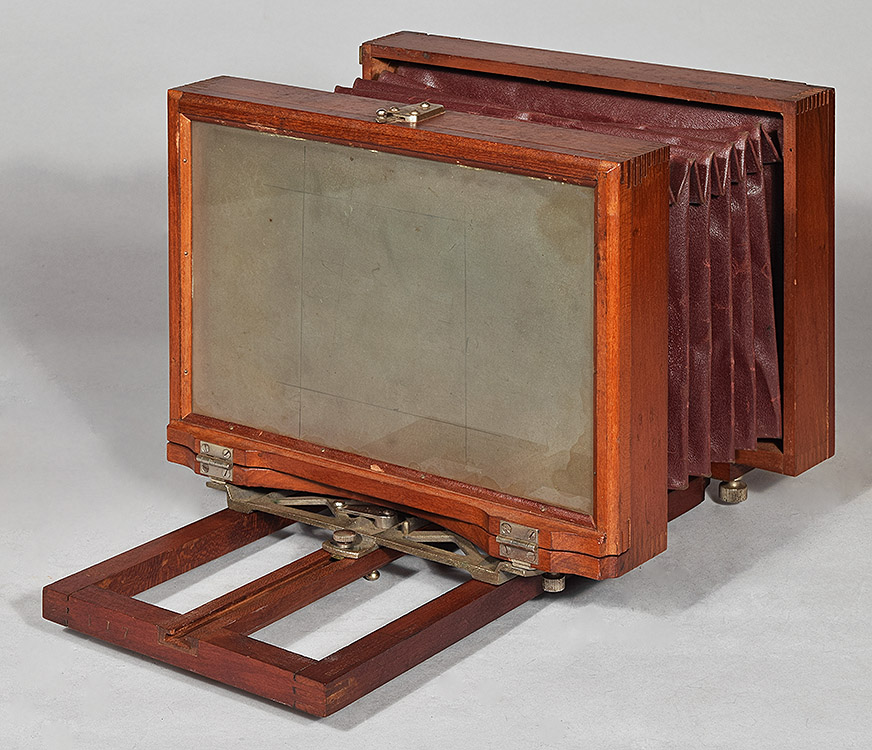
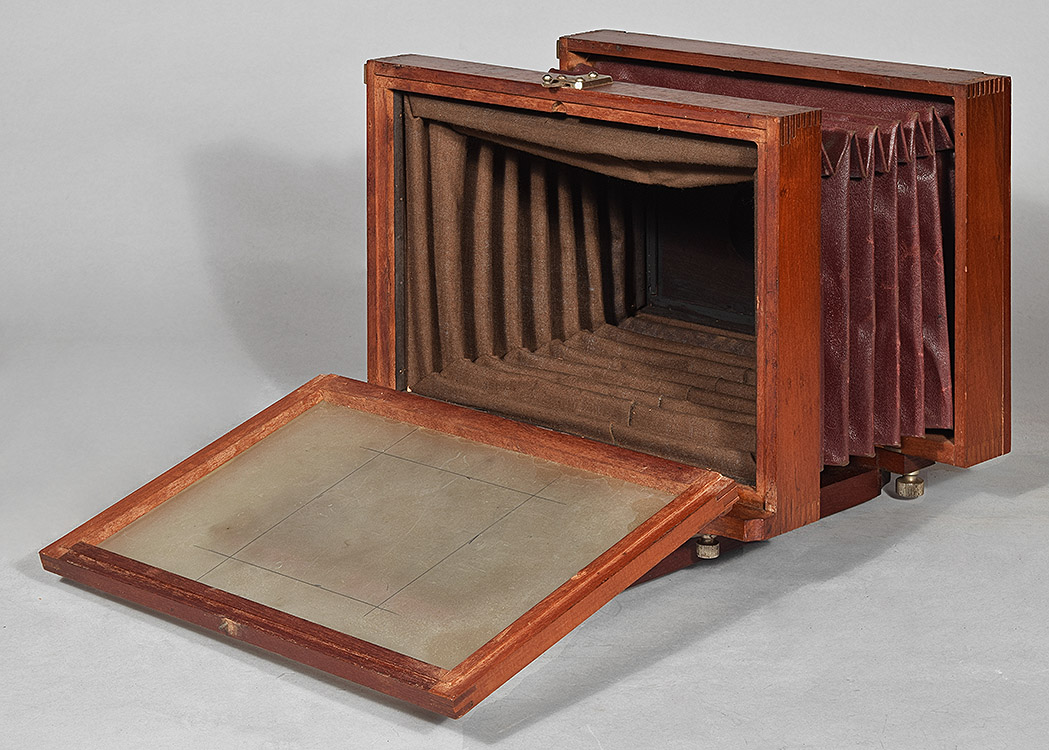
1) the four thumbscrews, two installed into the front standard through
brass plates, and two smaller ones installed through the slotted nickel
plate into the rear standard. Four nickel tabs can just be seen
from the side on top of this view - the thumbscrews would be screwed
into them if a vertical format was desired. A better view of the
plates can be seen above in the view of the left (from the
photographer's viewpoint) side of the camera.
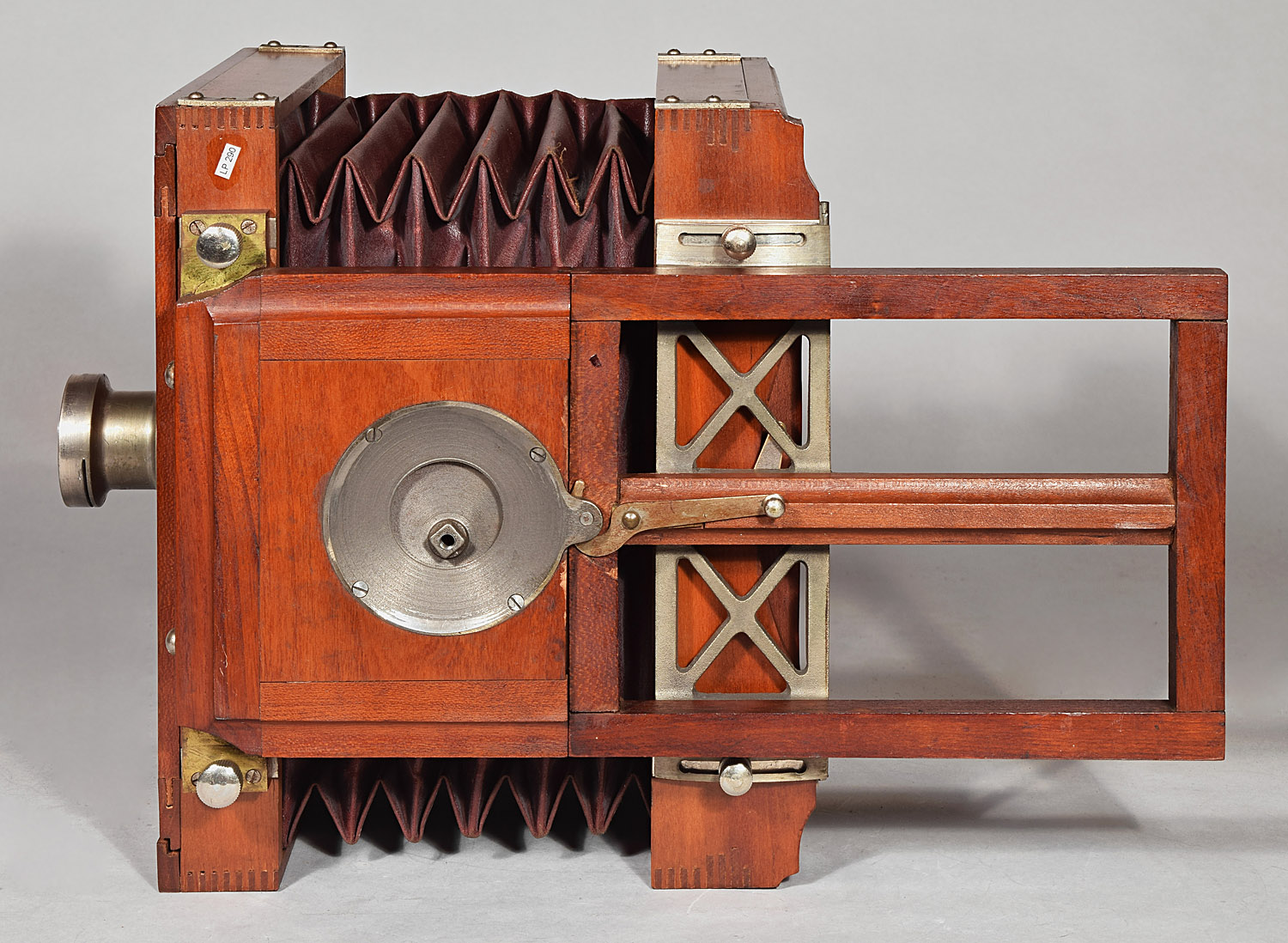



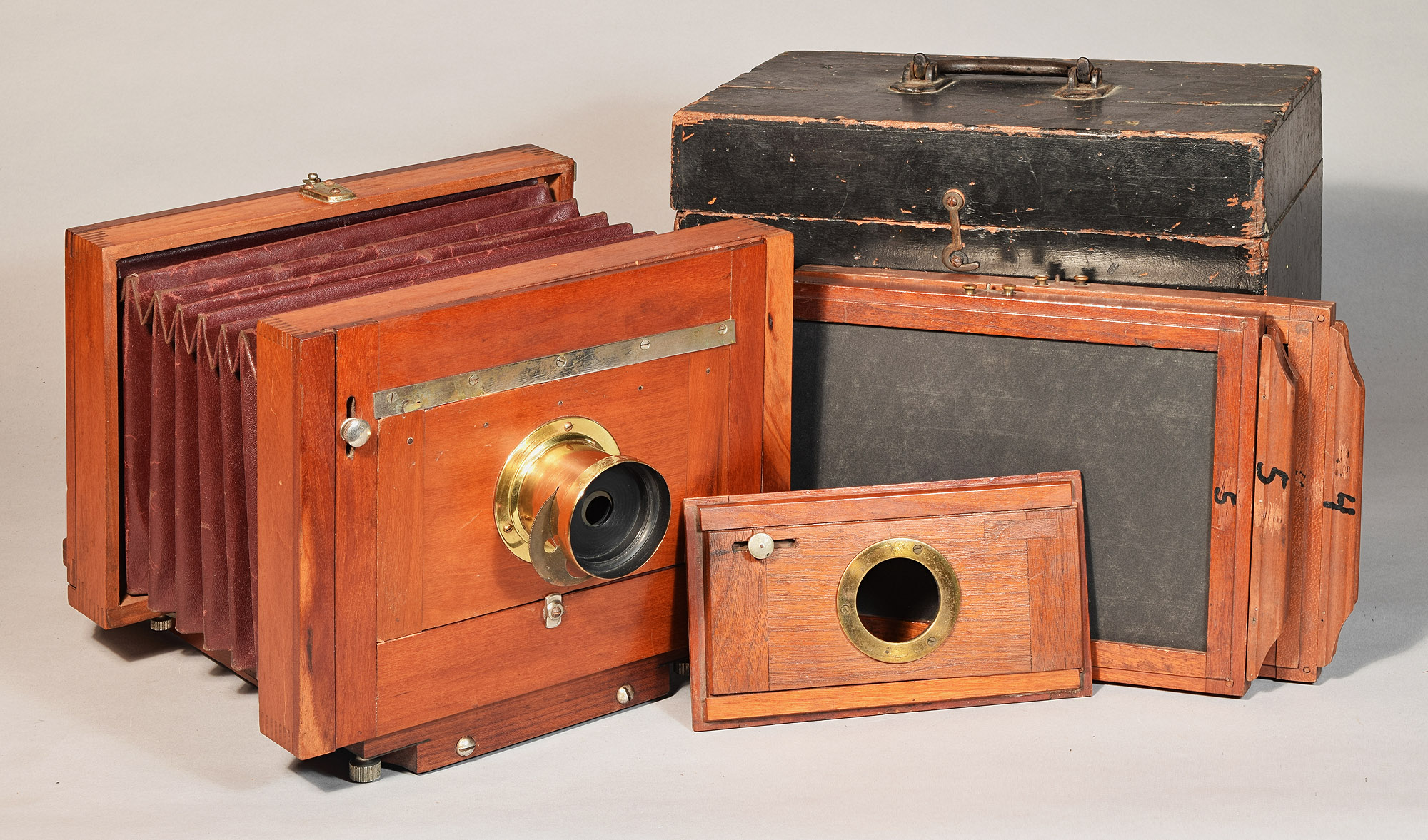
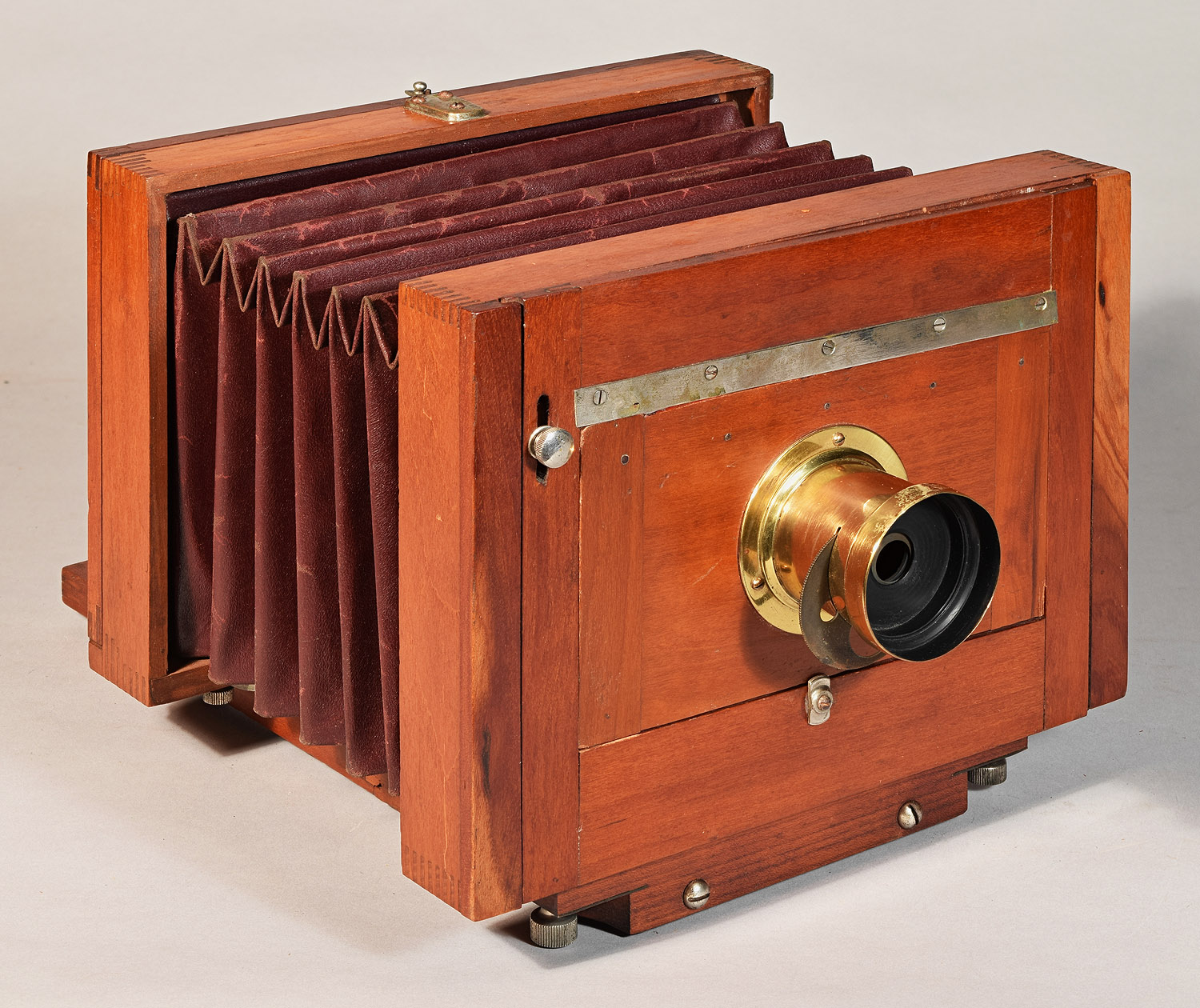
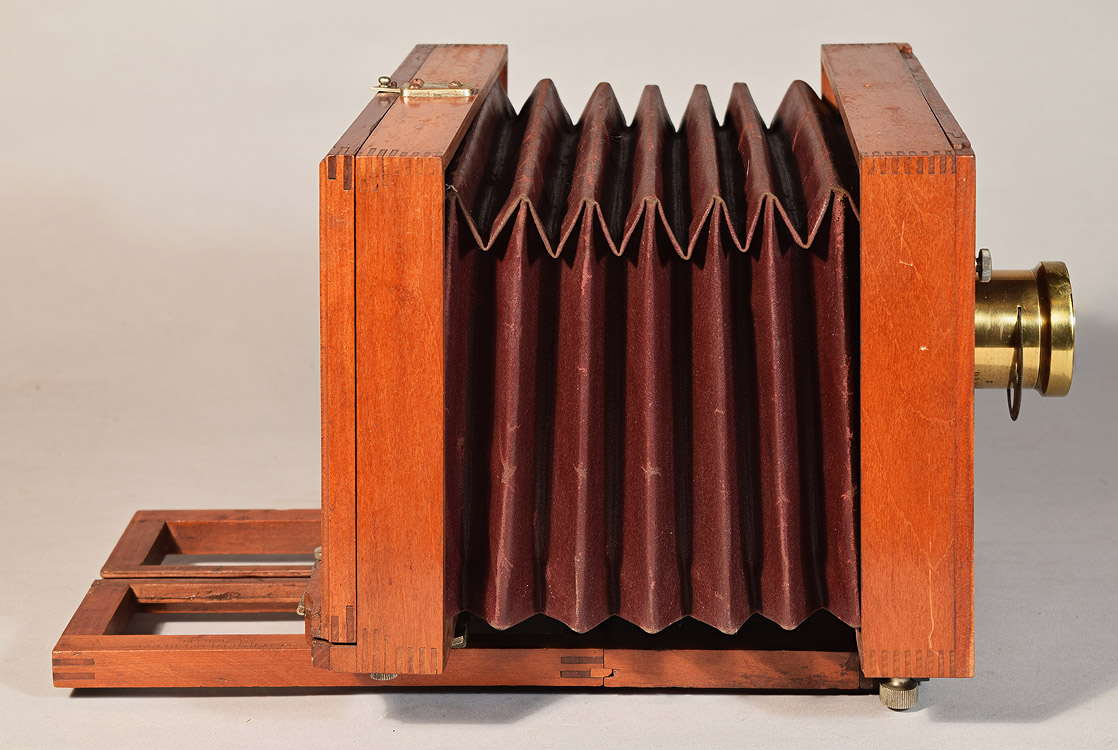

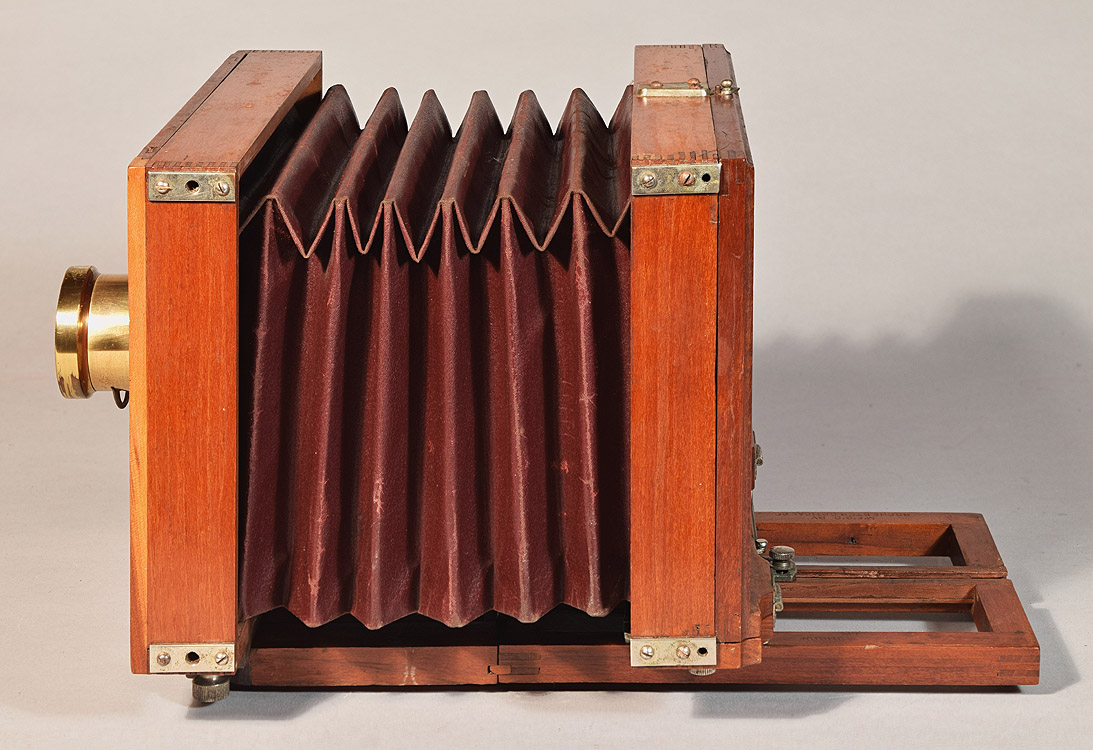
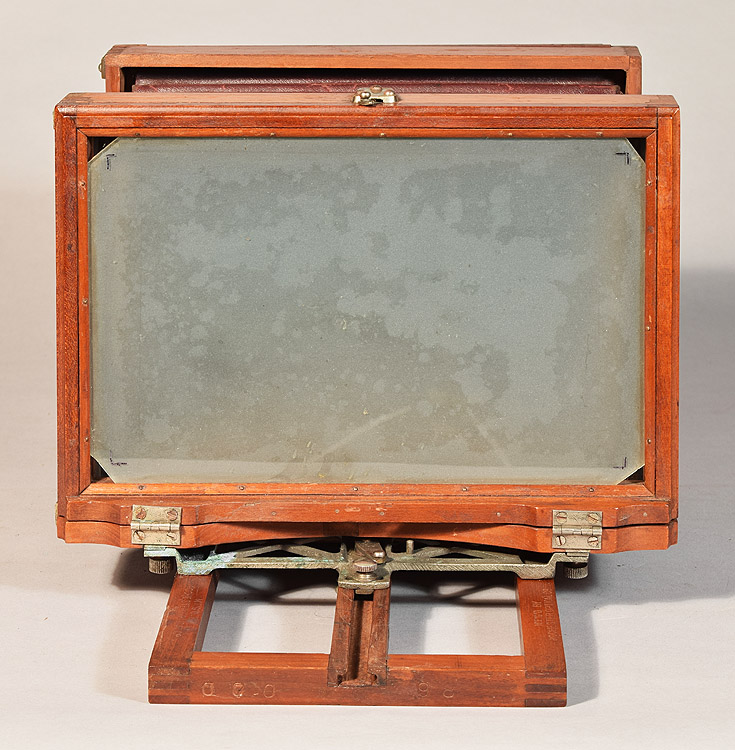
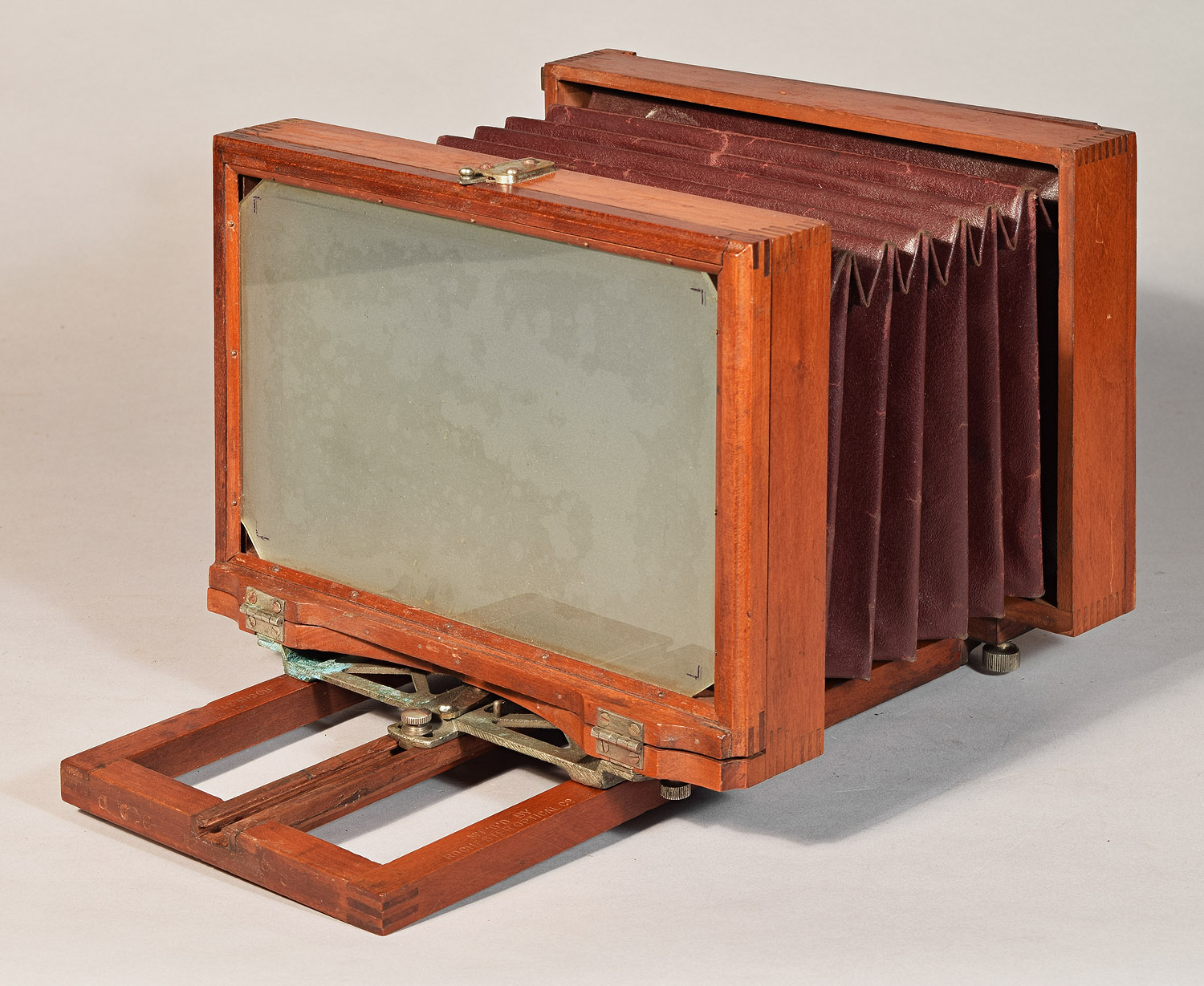
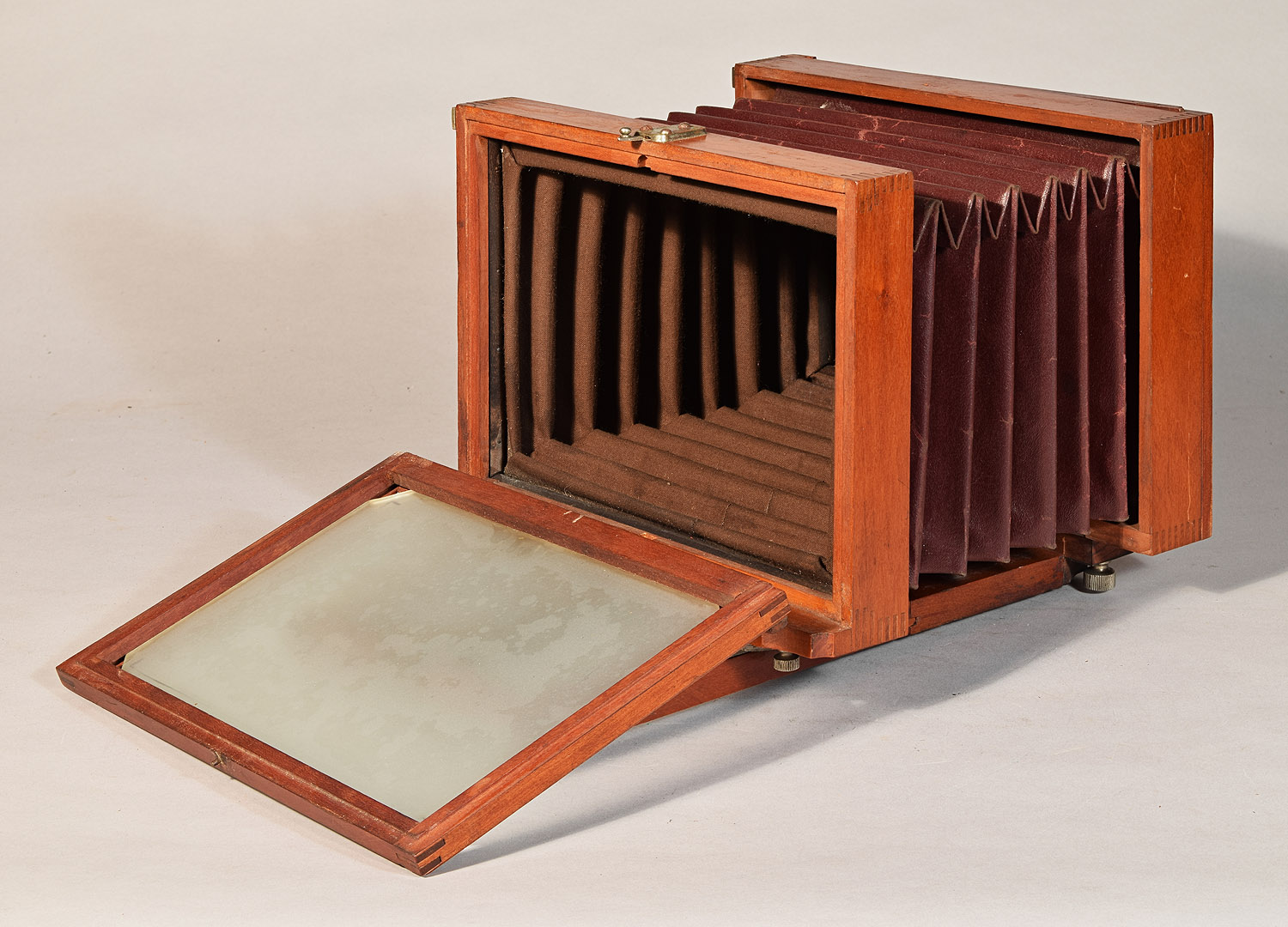
and the four thumbscrews that must be undone to change from horizontal
to vertical format.
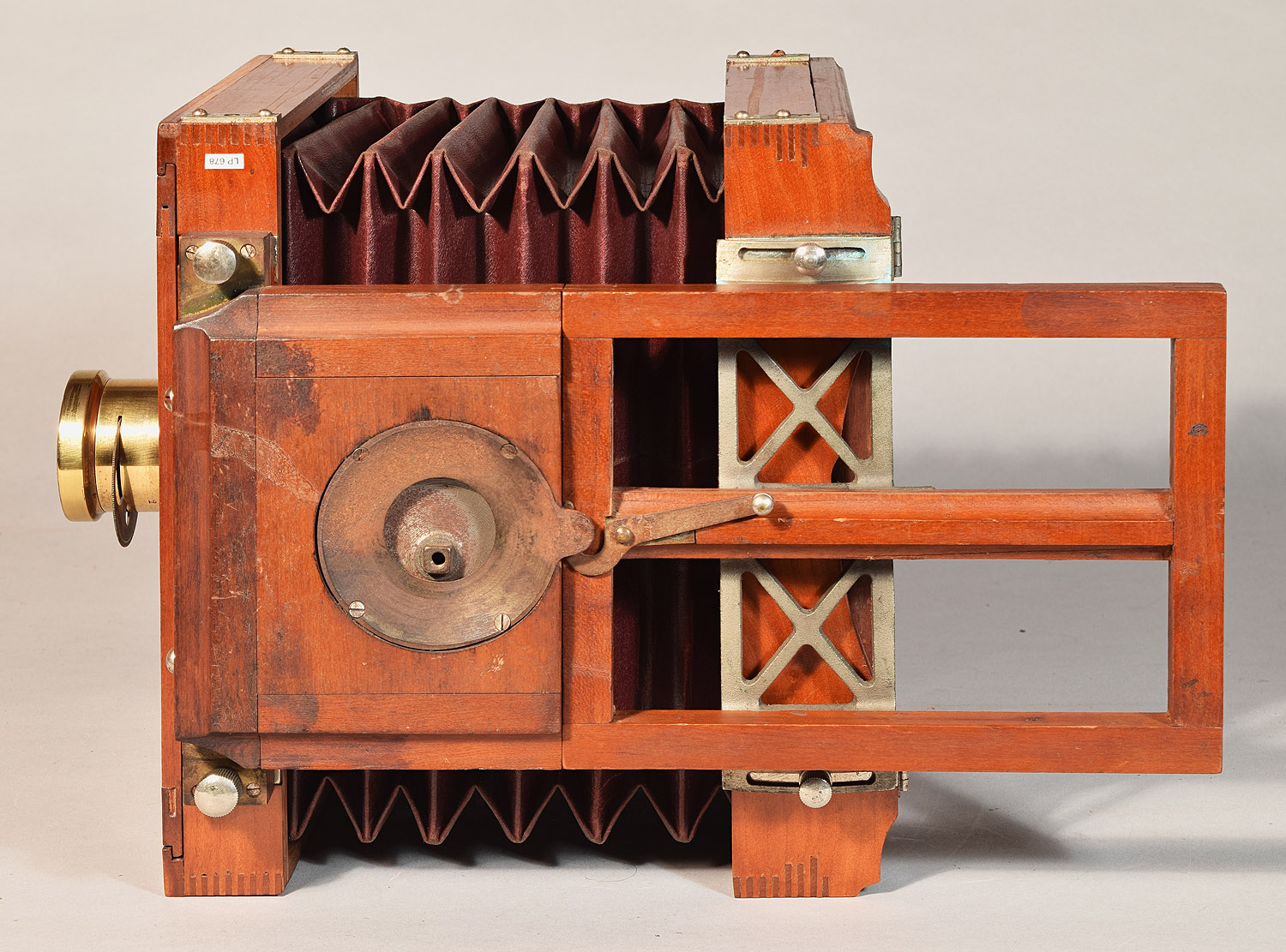
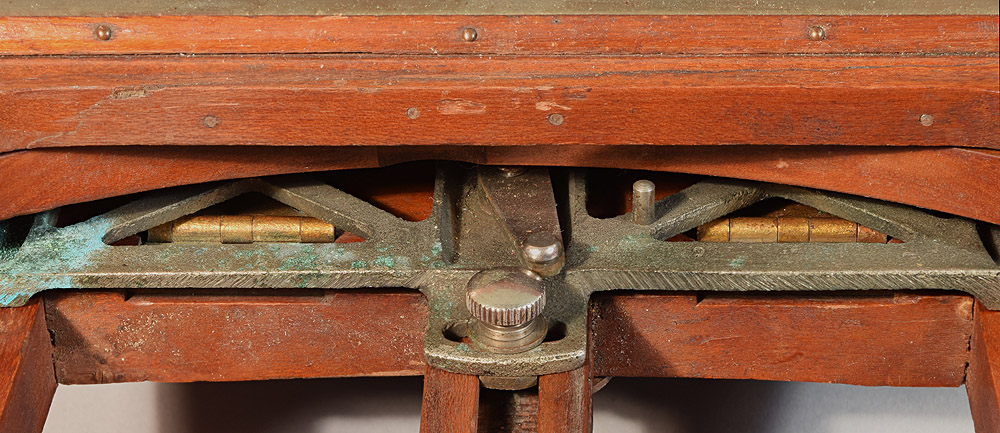


Construction: back focus
via push-pull; double swing; shifting wooden lens board;
reversing by unscrewing 4 screws and re-positioning;
Materials: mahogany body, cherry base;
built-in swiveling cast iron tripod base; maroon leather bellows;
nickeled brass hardware
Sizes Offered: 5x8.
Notes:
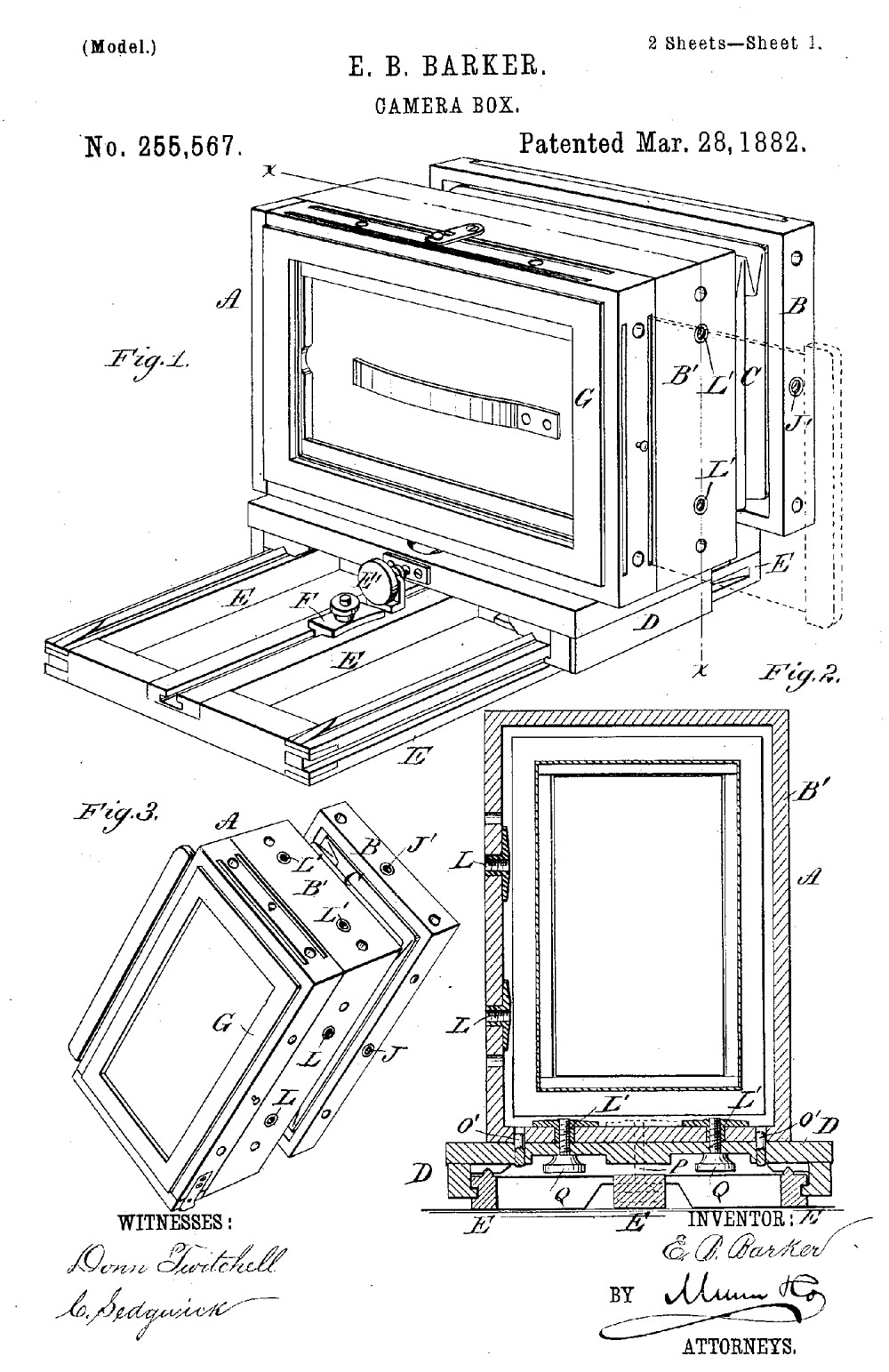
Rochester Optical Co. Catalog, 1883
Gent's Magazine, October, 1883
An Illustrated Cataloge of Cameras, Lenses and Other Apparatus
and Materials for Photography, Dated April 1, 1884, W.H.Walmsey
(Philadelphia, PA), p.12
